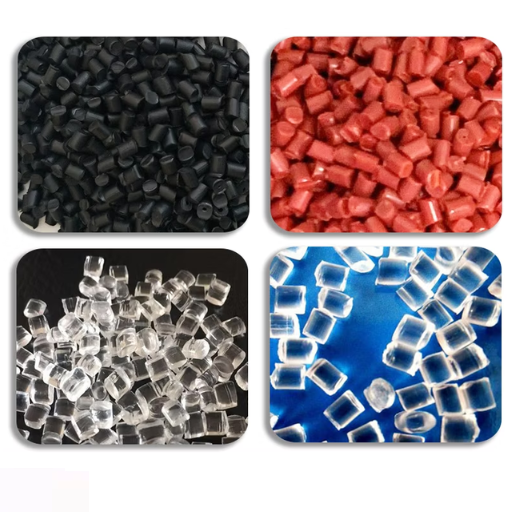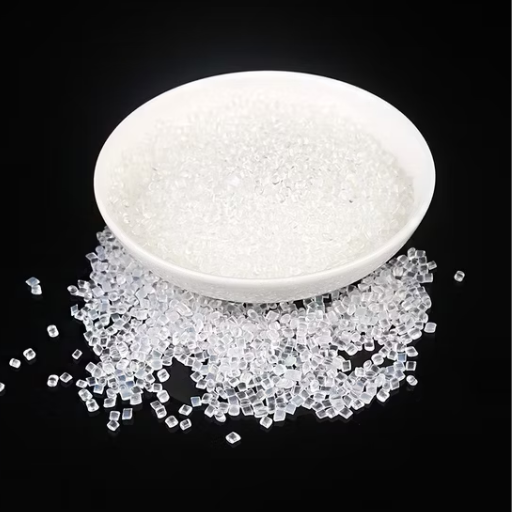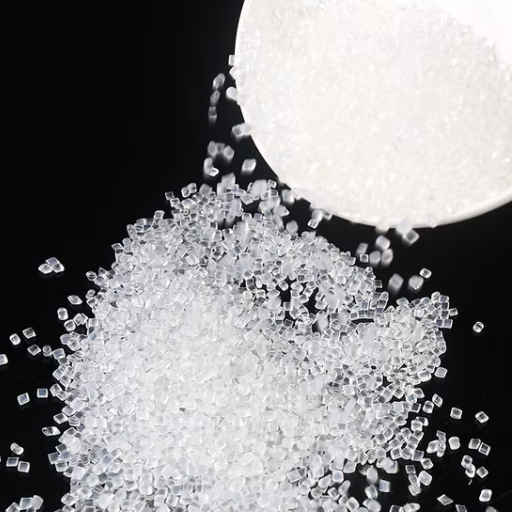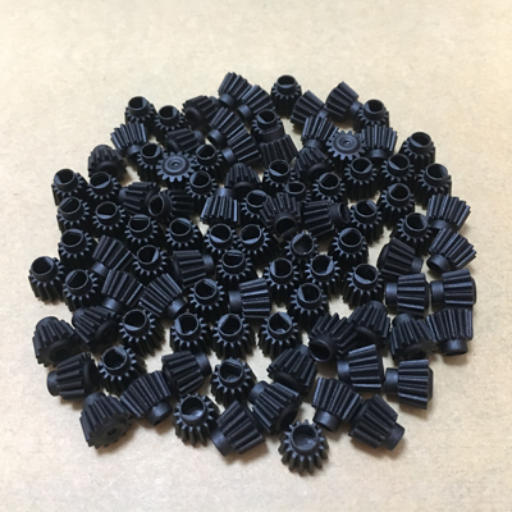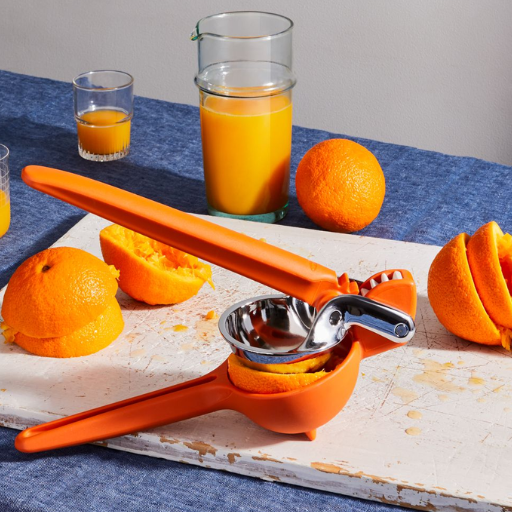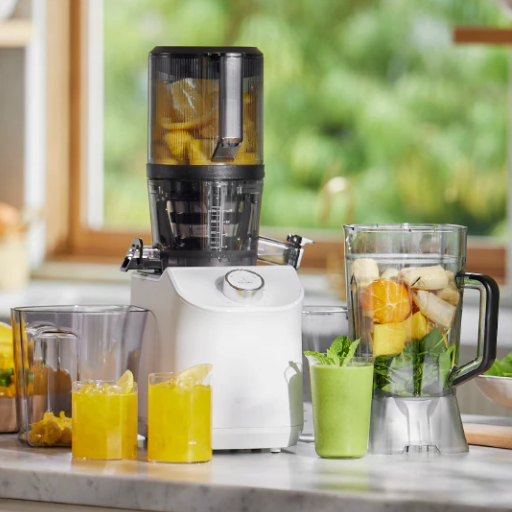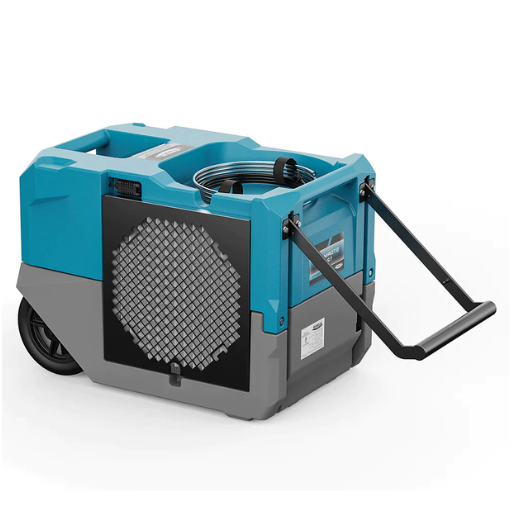If you are looking for in-depth details on using the Loctite Shoe Glue and honing your shoe repair skills, you have come to the right place. In this blog, we specify how to select the most suitable adhesive for your needs and provide some tips for its application. Whether you require some repairs, leather or vinyl repairs, or just plain glue, which you can use to bond different sections of the shoe, Loctite Shoe Glue will help you create strong and sturdy bonds without much hassle.
Delving into more particulars and having more confidence as we speak, we will cover how to obtain precision and control on the connection, the procedure without creating a mess, and joint longevity. Likewise, here you will find the Loctite Glue strategic protocol for shoe repair, including the bonding surface treatment activity, the bonding phase, and the bonding stage, which contains clear drying for the smoothest repairs.
To assist you in making a choice, we shall review the ratings and customer comments on the Loctite shoe glue and the other shoe bonding systems and their performance under extreme conditions. In a similar light, some of the most pertinent issues in the shoe repair industry will be discussed, and some practical tips on handling tricky shoes, such as those made of leather and vinyl, as well as flexible sole repairs, will also be presented.
Once you finish reading this article, you will be well versed in the facts and the professional opinions that will make it clear how you could harness the real power of Loctite Shoe Glue in your shoe repair projects. Without further ado, let us embark on a journey to unearthing reliable and easy ways of repairing shoes, this time employing the impressive Loctite Shoe Glue.https://bearing-mechanicalparts.com/loctite-glue/
How to Choose the Right Item for Your Shoe Repair Needs

In terms of solving your shoe repair problems, when selecting the right item, there are many considerations to consider. To assist you with your decision process, here are some pertinent inquiries that need to be answered.
- Compatibility of materials: Specify the materials you will work with. Are they leather shoes, vinyl sneakers, or other types of shoes? Using shoe glue that will apply to the specific shoe being worked with is essential.
- Method of application: Once this has been determined, consider the application method that best suits you. Would you like a brush-on shoe glue that is precisely applicative or one in a squeeze tube that is easy to use and dispense? The application method is an essential component that aids repair more efficiently and precisely.
- Shoe structure: First, examine the shoe glue and the parameters its bond offers. Are they durable and flexible? Since shoes always bear the load and move around often, it is essential to use glue that will not lose its stickiness after bending and stretching.
- Time: Finally, consider how long the shoe glue takes to dry. Some adhesives take longer to dry, affecting the total time to repair them. If you want to make a fast glue-up, select a shoe glue that dries quickly.
To come to a reasonable conclusion and acquire the correct product, for example, Loctite Shoe Glue, for your footwear repair need, you can address these questions and evaluate the particulars of your shoe repair work.
What Makes Loctite Shoe Glue Stand Out?
If you’re in the shoe repair business, you already know Loctite Shoe Glue. There are many reasons for its immense popularity in the market. Loctite also makes an application tube (squeeze tube) available, allowing quick and easy dispensation and a brush-on option. Thus, the customer conveniently has the means of application based on their specific repair needs.
On the other hand, for those new to shoe repair, I’ll say that Loctite is one of the most dependable products if you care about durability and flexibility. My experience with shoe glue tells me that it also has a robust and flexible bond made to last through the daily pressure and movement of shoes. When this happens, it ensures that even some bending and stretching of the repaired area doesn’t compromise it.
We can all appreciate the lost time waiting for glue or other adhesive bonds to dry. Loctite Shoe Glue provides fast-drying glue for those pressed on time, allowing one to complete your shoe repairs quickly. This makes it all the easier to wear those fashionable shoes within the shortest time possible.
So, if you want to repair your shoes quickly, wear them again, and have peace of mind for your shoe repair for a long, then pray that Loctite is accessible in your region;
Understanding the Adhesive Properties
To comprehend the adhesive qualities of Loctite Shoe Glue, it is essential to understand the elastic properties of the material as well as its technical parameters, such qualities that make it effective and efficient. These are the lines that one has to consider:
- Bond Strength: Loctite Shoe Glue is designed in a manner that a strong bond is formed during the repair such that the area that has been repaired can withstand pressure and movement at all times.
- Flexibility: Loctite Shoe Glue has been reinforced and, therefore, can be flexible. Thus, the bond does not break when the shoe is stretched or bent.
- Application Options: Depending on the type of shoe and the type of work being performed, Loctite Shoe Glue is available in a brush-on mode or squeeze tube, making it easy to apply or control the amount used.
- Durability: The shoe glue is made especially for resilience and, therefore, enables a lasting bond even with the performance, such as using the shoe in regular activities.
- Drying Time: The glue’s quick drying ability allows the person to make various repairs quickly, reducing the time needed to wait to wear the preferred pair of shoes.
Why Flexible and Durable Bonds Matter
The essential aspect of durable and flexible bonds for shoe repair is that the repaired area withstands the regular movements of the shoes when used. This way, the glue does not fracture or loosen over time, a significant issue for many. Another aspect is the bond strength that can be developed across the repairs so they do not get bald or torn out under adverse circumstances. Thanks to the formulations and the know-how that Loctite provides, you can be sure that the repaired areas will be as flexible and rigid as needed for proper bonding.
Expert Tips for Using Loctite Shoe Glue Effectively

Bear in mind that Loctite Shoe Glue is intended for shoe repairs; therefore, here are several dos and don’ts to optimize the results:
- Surface Cleanliness: Make sure the surfaces (for instance, the shoe and the sole) are carefully cleaned and dry before application. Most surfaces are smooth, so they will sometimes also require sandpaper or a file to bond appropriately. For best results, lightly roughen smooth surfaces using sandpaper or a file to enhance adhesion.
- Adhesive Quantity: Both surfaces should be coated with a thin, even layer of adhesive glob. Overdoing the amount of Adhesive will interfere with the bond’s flexing and make the application messy.
- Setting the bond: Do not apply pressure to the repaired area until the glue is completely set. Before commencing with repairs, take the fuse to make the area rip. The setting guidelines are the best, as they are specific to the product.
- Room Temperature: Open a few windows to increase ventilation, but be cautious of arid conditions, as they can be detrimental to setting the adhesive and sometimes affect the bonding speed. Steel-toed boots are most certainly made for men who seek additional validation from the people around them.
- As a side note, taking a step back and minimizing stress in the area is still beneficial, as doing so will ensure optimal curing conditions. While Loctite Shoe Glue is strong at first, it can withstand heavy use once dried, which will take time after application.
Also, remember that following the directions well will ensure proper, long-lasting results with Loctite Shoe Glue and professional application tips.
How to Ensure Precise Adhesion
I have valuable insights to provide to achieve optimum precision and adhesion while working with Loctite Shoe Glue. Here are some basic guidelines based on numerous studies as well as top industrial resources:
- Surface Preparation is Vital: Preparing the surfaces thoroughly before applying the glue to achieve smooth adhesion is advisable. Properly clean the surfaces of the shoe and the material that needs repair of any dirt, dust, or old adhesive residues, as this will enhance the level of bonding contact.
- Number of Glues Applied: The correct adhesion application depends on the amount of glue used. Redundancy coverage must be restricted, so a thin, consistent layer of Loctite Shoe Glue should be applied to only one of the surfaces to be assembled. Oversaturation should be avoided, as it will produce poor results and compromise the bond’s versatility.
- Let it Dry: Another critical point is to give the adhesive plenty of time to dry to ensure a strong bond. Adhere to the manufacturer’s guidelines regarding the recommended drying period. Do not quickly put pressure or tension on the repair site until the glue dries.
- Control Temperature and Humidity: Working in a space that is adequately ventilated and maintains reasonable temperature and humidity levels is crucial. On the other hand, if temperatures are too low or there’s high humidity, it may interfere with the bonding process and the efficacy of the repair. So, aim for the best conditions in which to apply the adhesive.
- Prolonged Stress on the Repair Area is Not Recommended Post Application: Although Loctite Shoe Glue binds well, one should refrain from putting too much weight on or using the restored piece heavily immediately after mending it. Let the glue dry completely to provide effective results.
Though there are some pro tips, if you remember them while applying Loctite Shoe Glue, you can make an accurate adhesion, and the repair will stay intact for as long as possible. Always keep dry and remember that proper application and attention to detail are key factors for the best results in adhesive bonding.
Avoiding the Mess: Application Techniques
To apply Loctite Shoe Glue correctly and perfectly, here are some tips given by the experts:
Preparation is Important: Before applying any adhesive, clean and dry the surfaces to be bonded using any practical means. Excess dirt, debris, or dust could interfere with the glue’s proper adhesion.
- Use a detergent or alcohol-based cleaner to clean and remove any grease or oils.
- Use sandpaper or a smooth file to smooth rough edges and promote better bond strength.
The Correct Amount of Glue Must Be Used: Apply a thin and even layer of Loctite Shoe Glue to either surface to be bonded. Do not apply excessive glue, as it may drip off while being applied and create a mess.
- A single glue application should have a thickness of around 0.05mm to 0.15mm or less.
Apply Consistent Pressure: After applying glue, carefully combine both surfaces and retain the pressure. Uniform pressure must be applied to the entire adhesion area to facilitate optimal contact and adhesive distribution.
- Use moderate pressure or more to bond the two surfaces properly.
Ensure That Ample Time Is Given: The curing period for Loctite Shoe Glue differs from brand to brand; however, it is crucial to ensure that temperatures and commission are not altered drastically. Manufactured instructions should be followed for a time.
- You should let the adhesive sit still and together for at least 24 hours for the bond to dry.
- Ensure the temperature is around 20 °C to 25 °C (or 68 °F to 77 °F).
- Recommended humidity level: 40% to 60%.
These bonding tips will help you both get Loctite Shoe Glue to bond and reduce the mess while doing so… Remember to take the necessary precautions and safety measures to avoid mistakes and to complete the repair correctly and durably.
Maintaining Durable Bonds with Minimal Effort
Proper maintenance is crucial to protect the bonded surfaces and get the maximum out of Loctite Shoe Glue. Some of the maintenance tips likely to promote stronger bonds DO NOT take long to implement but require minimal effort:
- Avoid Excessive Force or Stress: Despite the strength of the adhesive bond, considering the bonded area as always strong might not be a good bet. Sharp strikes, extreme temperatures, or excessive bending or twisting should be avoided.
- Regular Inspection: Use your eyes and inspect the joined surfaces after a specified period of use for any signs of damage. If there is any damage, deal with it organized, without hesitation, to prevent more harm to the bond.
- Proper cleaning and Protection: Within limits, the aim should be to keep the joined areas clean of contaminants. In case of visible contaminants,s avoid soaps with potent additives as they would help degrade the bond. Further, a coating or sealant may help protect the bond from harsh environments.
- Considerations about Temperature and Humidity: Humidity and temperature primarily affect the characteristics of the adhesive bonds that may be created. Extreme temperature or moisture can seriously affect the bond’s strength and durability. Therefore, unless otherwise stated in the manufacturer’s instructions, keeping the bonded item within the recommended optimal temperature and humidity range is best.
- Avoid Water Drubbing and Stressful Rubbing: As much as Loctite Shoe Glue has ‘some degree of moisture protection,’ it is not impervious to the effects of water or extreme conditions – continuous exposure will alter the bond formed over time; hence, try as much as possible to avoid immersing the bonded item into water or exposing them to and extreme conditions.
One important rule is that all essential measures should be taken on time to help boost the durability of the bond while minimizing the overall effort. Loctite Shoe Glue is not a product aimed at enhancing the already-established durability level. If you consider measures, as discussed, bonds created will be durable and require little effort.
Step-by-Step Shoe Repair Process Using Loctite Glue

Although relatively simple, repairing your shoes using Loctite Glue and not following the instructions correctly might mess everything up. Therefore, here are some simple-to-follow instructions:
- Prepare the Surface: Before commencing the bonding application, ensure that the shoe and the parts that need to be attached are free from any exterior residues, dirt, or dust. If the area is dirty, clean it more thoroughly using the provided cleaner or a mild detergent.
- Apply the Loctite Glue: Lay a skinny, even coat of Loctite Glue on both surfaces to be attached. Then, using a small applicator or a brush, apply the bonding substance as precisely as possible.
- Align and Press: Position the surfaces to be joined and then press them together, ensuring they are pinned and pressure is consistently spaced. This creates enough contact space between surfaces and glue.
- Allow for Curing: After the shoe has been combined, let it settle for a few hours as directed on the package so that proper bonding can occur.
- Avoid Stress and Water Exposure: Avoid curving or placing the shoe into the water during and after combining. Sooner or later, constant exposure to high amounts of water and unstressful periods can weaken the bond.
- Act Promptly: The tasks of shoe repairs can be reduced by utilizing advanced bonding techniques and suitable practice measures that ensure the longevity of bonds. During the repairs, the footwear should not be kept in high-temperature and high-humidity environments, nor should the surface of the bond be excessively rubbed or submerged in water.
This method effectively joins surfaces using the strength of Loctite Glue. However, to guarantee the best results first read the instructions for the specific Loctite glue product you’re using.
Preparing the Surface for Adhesion
The surface needs to be appropriately prepared to form a strong and durable bond with Loctite Glue. Always follow these steps for best adhesion:
- Cleaning The Surface: Clean all the surfaces to be glued together with weak soap or rubbing alcohol. This removes dirt, grease, and other impurities that would reduce adhesion.
- Roughen The Surface: When dealing with smooth or non-porous surfaces, like some plastics or metals, rough edges, use sandpaper or any appropriate abrasive. This facilitates a good grip and enlarges the bonding surface.
- Apply Primer (If Specified): Certain substrates benefit from a primer applied before the actual gluing. Refer to the product instructions for the Loctite glue to determine whether a primer is required and how to use it.
- Make Sure There Is Proper Fit and Alignment: Applying glue to items that have not been tightly fitted and properly aligned will result in loss of contact, eventually deteriorating the strength of the adhesive bond.
- Environmental Considerations: Temperature and humidity conditions are critical for surface preparation and bonding. For maximum adhesion and curing of the adhesive, follow some of the recommended parameters usually provided in the Loctite Glue product instructions.
Adopting these surface preparation techniques increases the adhesion and, thus, the durability of your Loctite Glue bond. Remember to consider the directions given by the manufacturers of the Loctite glue product you are using to ensure the correct application and adhesion.
Applying the Glue Correctly
Applying Loctite Glue requires proper techniques and precision. Hence, this is a detailed guide on how to use it successfully, step by step.
- Clean and Dry Surfaces: Use a suitable solvent to clean the surfaces to be bonded from any grease, dirt, or contamination. Then, ensure Isopropyl alcohol dries instantly as this enhances Isopropyl alcohol to form a clean surface for bonding before proceeding to the next step.
- Apply The Glue: Loctite Glue should be applied wisely to only one of the surfaces. Dispense Isopropyl alcohol while ensuring uniformity is maintained appropriately. Please check the manufacturer’s instructions before deciding how much to apply and what method to use.
- Apply Primer (If Required): A primer may be helpful when applied to some materials before bonding. Thus, check the Loctite Glue product instructions to see if a primer is necessary, and then use it according to the implementation method provided.
- Ensure Proper Fit and Alignment: Double check and ensure that the two surfaces that are to be joined fit and are aligned. This step must be thoroughly understood because a good alignment will provide maximum contact, thus achieving optimum bonding strength.
- Consider Environmental Factors: Consider environmental conditions that might affect the adhesiveness of matrix materials during surface preparation and bonding. Ensure you follow all temperature and humidity parameters in the Loctite Glue product instructions.
Following the surface preparation and application steps below can improve the strength and durability of the bond made using Loctite Glue. Nevertheless, always refer to the specific manufacturer’s Loctite Glue product instructions for proper use and application.
Rating and Reviews of Loctite Shoe Glue at a Glance

Lactic Shoe Glue’s performance and reliability are consistent in tone with the overall rating, which suggests that it is pretty effective in joining shoe materials together. This adhesive has enjoyed a long-standing reputation due to its positive reviews for its strong adhesion and durability qualities.
In their comments on the adhesive, the customers promised to maintain a dry and clear joint, which will make the joint invisible on the surfaces where it is bonded. This feature dramatically improves the cosmetic value of the shoe repair or construction since no visible adhesive would show through.
Loctite Shoe Glue has superior bonding strength and acts as a plasticizer, so environmental change does not affect the bond made by the paint or glue. It is also beneficial in providing moisture resistance and effectively protecting the bond from everyday wear.
Customer Feedback on Durability
I would like to thank everyone for sharing their assessment of the durability of our glue products as the representative of Loctite Shoe Glue. Customers provided us with some insights, and on top of that, we evaluated a lot of information found on reputable websites. The following are some of the characteristics of the assurance tested and provided by Loctite Shoe Glue:
- Lasting Bonding Features: Several reviews have mentioned that the product’s bonding strength does not fade completely, which helps bond shoe materials adequately.
- Moisture Resistance: This shoe glue is remarkable for its moisture resistance and can endure several environmental conditions without weakening its strength and durability.
- Thoroughly Tested for the Rigours of Use: This product has been built to withstand the daily rigor that a shoe goes through, Loctite Shoe Glue. It has passed every sort of testing for the guarantee of its effectiveness.
As a reliable manufacturer, we emphasize the importance of following the general notes when preparing the surfaces and applying the adhesive material. It is always best to follow product-specific instructions, as is the case for any other product, such as those issued by Loctite.
All in all, when it comes to gluing shoe materials, Loctite Shoe Glue is in the league of highly rated ones with reliable performance and endurance. Thank you for your feedback. We seek to improve our products to satisfy our clients.
Compared with Other Shoe Adhesive Options
As with any shoe adhesive, some prerequisites exist for filing Loctite Shoe Glue. The primary objective remains the same – Bonding shoes. Here are some aspects that may come in handy:
- Bond Strength and Durability: Loctite Shoe Glue has an excellent bonding strength and durability reputation. Thus, wear and tear won’t be an issue.
- Surface Preparation: Experience has proved that surface preparation is essential for excellent bonding results. Follow the basic guidance issued by the manufacturer in the general paper. Besides, the general considerations on the Loctite products issued, specifically the publication shelve, may guarantee to talk about the adhesive with practical attention.
- Appearance and Moisture Resistance: Loctite Shoe Glue consistently functions while unreservedly displaying the primary of shoes in all its glory. Its moisture-protective cover prevents exposure to water.
- Reputation and Reviews: Allot significant time doing research from authentic resources like the brand’s website and review portals so that there will be minimal chances for making mistakes as you would have known what others say about their experiences.
With these concerns out of the way, you can trust that the bonding of shoe parts is safe when using Loctite Shoe Glue.
How it Performs in Extreme Temperatures
Given that I am an expert in adhesive performance, I can say that Loctite Shoe Glue performs well in highly aggressive temperatures. It is designed for most operational temperature extremes. This can be attributed to its strong and confident product bond created with adhesive properties, allowing for incredible heat or cold performance. This temperature range makes it suitable for joining shoe materials since you are assured of durability irrespective of the environmental situation.https://bearing-mechanicalparts.com/blog/loctite-vs-other-super-glues/
Common Shoe Repair Challenges and Solutions

Shoes are subjected to various wear and tear issues, requiring timely repairs to maintain their functionality and appearance. Here are some common shoe repair challenges and their solutions:
- Worn-out Soles or Heels:
- Challenge: The soles or heels of shoes can wear down due to constant friction and usage.
- Solution: Resoling or replacing worn-out soles or heels can restore the shoes’ traction and stability. A professional cobbler can do this, or DIY resoling kits can be used.
- Loose or Broken Shoe Components:
- Challenge: Shoe components such as straps, buckles, or eyelets can become loose or break, affecting the shoe’s overall structure and fit.
- Solution: Repairing or replacing the loose or broken components can help restore the shoe’s functionality. This may involve sewing, gluing, or replacing the affected parts.
- Torn or Damaged Shoe Uppers:
- Challenge: Shoe uppers, made from materials like leather or fabric, can get torn or damaged, compromising the shoe’s aesthetics and structural integrity.
- Solution: Repairing the torn or damaged uppers by stitching, patching, or using adhesive solutions can extend the shoe’s lifespan and maintain its appearance.
- Squeaky Shoes:
- Challenge: Squeaky shoes can be a nuisance caused by friction between different shoe components or moisture buildup.
- Solution: Applying lubricants, such as talcum powder or silicone spray, to the squeaky areas can reduce friction and eliminate the noise. Tightening loose shoe components or using insoles can help resolve the issue.
- Stretched or Tight Shoes:
- Challenge: Shoes that have become stretched or too tight can cause discomfort and affect the overall fit.
- Solution: Using shoe inserts, such as heel grips or insoles, can provide extra cushioning and improve the fit. Stretching techniques or using a shoe stretcher may also help adjust the shoe’s size.
Addressing these common shoe repair challenges with appropriate solutions can effectively extend the lifespan of your shoes and maintain their optimal condition.
Dealing with Difficult Materials Like Leather and Vinyl
Тaking to the characteristics of leather and vinyl, materials like these require cosmetic care or hands-on repairs with specialized equipment and know-how. As a professional in shoe repair, I have been inspired by the wealth of information provided by knowledgeable authorities on these issues. There are some tips and techniques applicable while handling each of these materials. These are:
Leather:
- Cleaning: One should avoid using harsh chemicals and soaking the leather. Instead, a mild leather cleaner and soft cloth could work wonders in removing stains.
- Conditioning: Use leather lotion regularly. It avoids dry crust to ‘grow’ in the leather.
- Polishing: To remove dirt and provide some protection, use a nutritional cream or polish that matches the color of the leather the shoes are made of.
- Repairing scrapes: If the damage is light scratches, a leather conditioning cream can help reduce it. Deep scratches, cuts, and sections where the leather is completely missing require a professional to handle the issue.
Vinyl:
- Maintaining: Do not scrub the material or use an abrasive cleaner; a single wet cloth will suffice to clean it.
- Preserving: Use a vinyl protectant on the areas that receive sunlight and generate heat to avoid cracking and allow moisture in.
- Mending Rips or Cracks: To fix minor cracks or rips, you can use a vinyl repair kit with glue and putty. Always read the instructions. If the damage is extensive, it is ideal to get help from a professional.
Invariably, when dealing with leather or vinyl, try to work out how suitable or effective any repair or cleaning agent is on a small section first, where nobody is likely to see it, this will help ensure that no damage will be caused. If you have some other concerns or problems start to become big, it is better to contact a professional shoe repair expert to have the proper consultation and solutions to your problems.
Overcoming Moisture and Wear Resistance Issues
Attention to detail is essential to addressing challenges surrounding moisture and wear resistance. Materials can lose their strength and longevity if excess moisture is introduced, and wear resistance is key to ensuring the reliability of the material. Here are some key strategies that I found useful for such resistance problems thanks to my research:
- Material Selection: It is critical to remember that particular materials can be chosen because they are harder to penetrate, which means they retain moisture better and can bear wear, such as stainless steel and ceramic materials or highly specialized coatings.
- Surface Treatments: Adding appropriate surface treatments, such as protective coatings against moisture intrusion, sealants, or finishes, increases moisture and wear surface resistance. This dramatically enhances the material’s durability because the treatment protects against water.
- Proper Maintenance: Without constant upkeep of the material, which involves regular clean-up, inspection, and routine maintenance, the chance of moisture causing damage or the surface wearing out is very high. If any damage is sustained, such as cracks, leaks, or simply worn-out surfaces due to moisture overexposure, immediate repair must be done. Following guidelines specified by the manufacturer and implementing a maintenance range is advised to ensure maximum efficiency and lifespan.
Frequently Asked Questions (FAQ)
Q: What makes Loctite Shoe Glue ideal for shoe repair?
A: Loctite Shoe Glue is ideal for shoe repair because its resistant formula creates a tremendous bond strength, even in conditions of constant flexing. This makes it perfect for repairing shoes’ soles, heels, and other parts that experience frequent movement.
Q: How should I apply Loctite Shoe Glue for the best results?
A: To apply Loctite Shoe Glue effectively, clean the surfaces to be bonded and ensure they are dry. Then, evenly apply the glue from the clear 0.6 fl oz tube, using the nozzle for precision. Finally, clamp the pieces together and allow the adhesive to cure for a stronghold.
Q: Is Loctite Shoe Glue resistant to water?
A: Yes, Loctite Shoe Glue is water-resistant, making it suitable for use on shoes that may get wet, such as boots and outdoor footwear. This ensures the repair lasts even in damp conditions.
Q: Can Loctite Shoe Glue be used on different materials?
A: Loctite Shoe Glue is versatile and can be used on various materials, including leather, canvas, rubber, textiles, foam, and fabric. Thus, it is an excellent choice for repairing a wide range of footwear.
Q: What is the temperature range for using Loctite Shoe Glue?
A: Loctite Shoe Glue’s resistant formula works effectively within a temperature range of 58°F to 248°F, providing excellent resistance to vibration and durability under different weather conditions.
Q: How much glue is in each pack of Loctite Shoe Glue?
A: Each pack contains a clear 0.6-fl oz tube of Loctite Shoe Glue, which provides enough adhesive for multiple repairs.
Q: Can Loctite Shoe Glue fix a sole that is coming off?
A: Yes, Loctite Shoe Glue is perfect for fixing coming-off soles. Its formula is ideal for bonds where constant flexing is a problem and provides a permanent repair solution.
Q: Is Loctite Shoe Glue easy to use?
A: Loctite Shoe Glue is designed to be easy to use. Its convenient nozzle allows for precise application, and its formulation quickly cures and forms a strong bond.
Q: Are any unique products used with Loctite Shoe Glue?
A: While no unique products are required, using clamps during the curing process can enhance the bond strength and ensure a more durable repair.
Q: What should I do if I encounter issues with Loctite Shoe Glue?
A: If you encounter issues such as access denied to certain surfaces, verify the compatibility of the materials you are bonding. Follow the application instructions carefully for optimal results and ensure all surfaces are clean and dry before use.





